Design the aesthetic or fabric
Despite their comparable uses and abilities, Samsung’s Gear VR and Google’s Daydream View headset shells feature distinctive designs. True, both have the same general look of giant goggles they strap onto your head. But from there, these makers choose different paths.
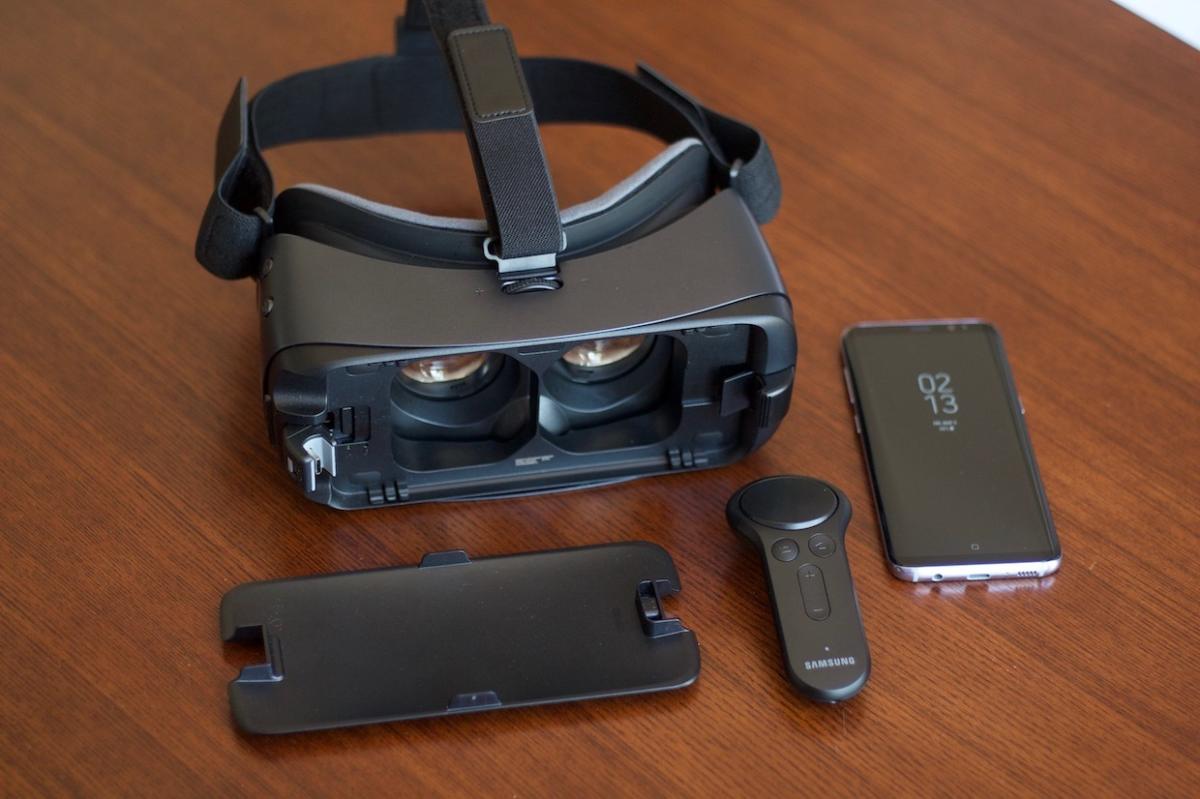

Each consumer Gear VR model has followed the same basic design, which is very heavy on plastic. It’s reasonably lightweight but chunky, and the phone snaps in securely. So that the screen rests right in front of your face. You’ll find a large touchpad built into the headset. On the right side of the shell, along with home and back buttons. On the top is a dial. That lets you change the focus of the lenses and quickly find the sweet spot.
Meanwhile, the Daydream View is soft. Yes, soft! It has plastic elements, but the shell is wrapped in a luxurious fabric that feels like comfy pajama pants. The part you stick on your face is like running a shirt wrapped around a pillow. That’s very typical for VR hardware. But it sets the Daydream View apart from the pack, and the shape is much more compact.
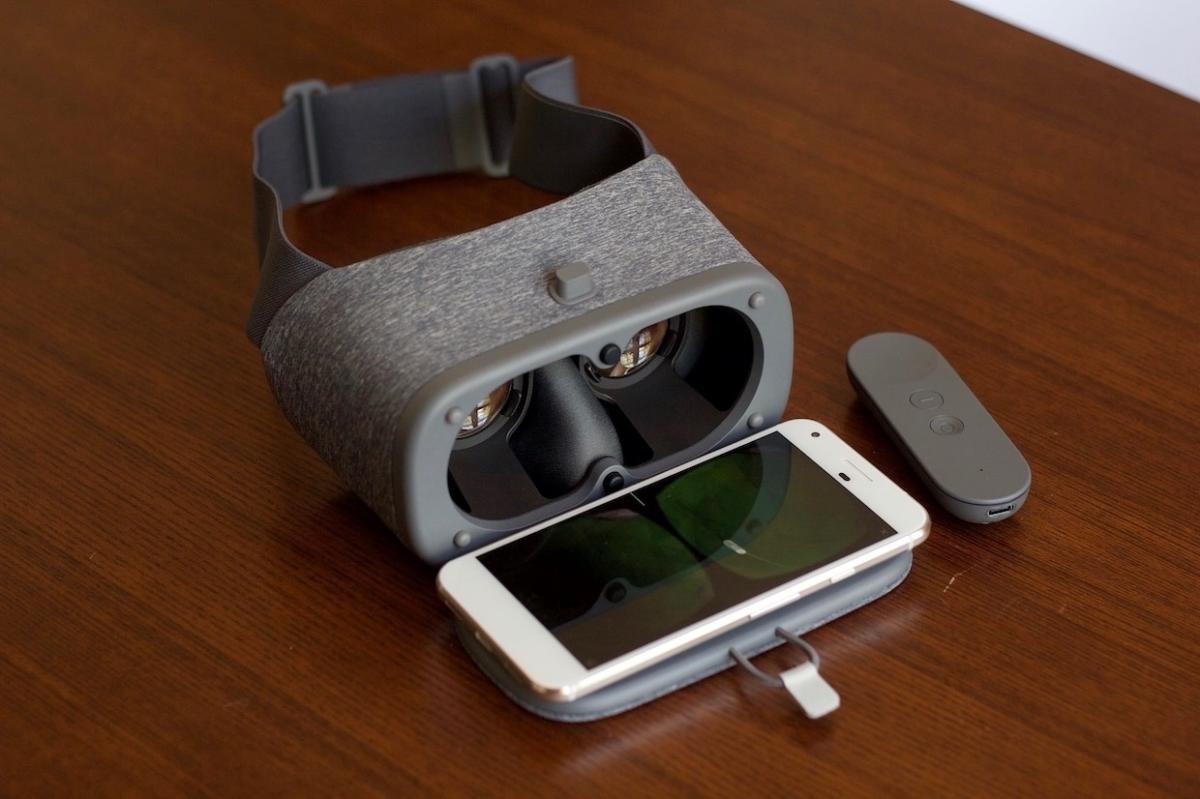

Unlike the Gear VR, your phone doesn’t snap into place with the Daydream View. Instead, you place it between the shell and shut the door. It’s held with little rubber stoppers and a bungee cord latch on top. It’s done this way so that the headset can work with several different Android flagships with varying shapes and sizes. Although similar in approach to what Cardboard did, it’s still a snug fit. You don’t have to worry about the phone sliding out easily during use.
Controllers, Two of a Kind
Daydream deserves credit for being the first to bundle in a wireless remote as standard. Meaning every app or game uses it in some fashion. It’s primarily used as a pointer for navigating menus and selecting items. Still, the motion controls also allow you to steer a car or throw virtual items. Clicking on the touchpad, meanwhile, lets you easily interact with things.
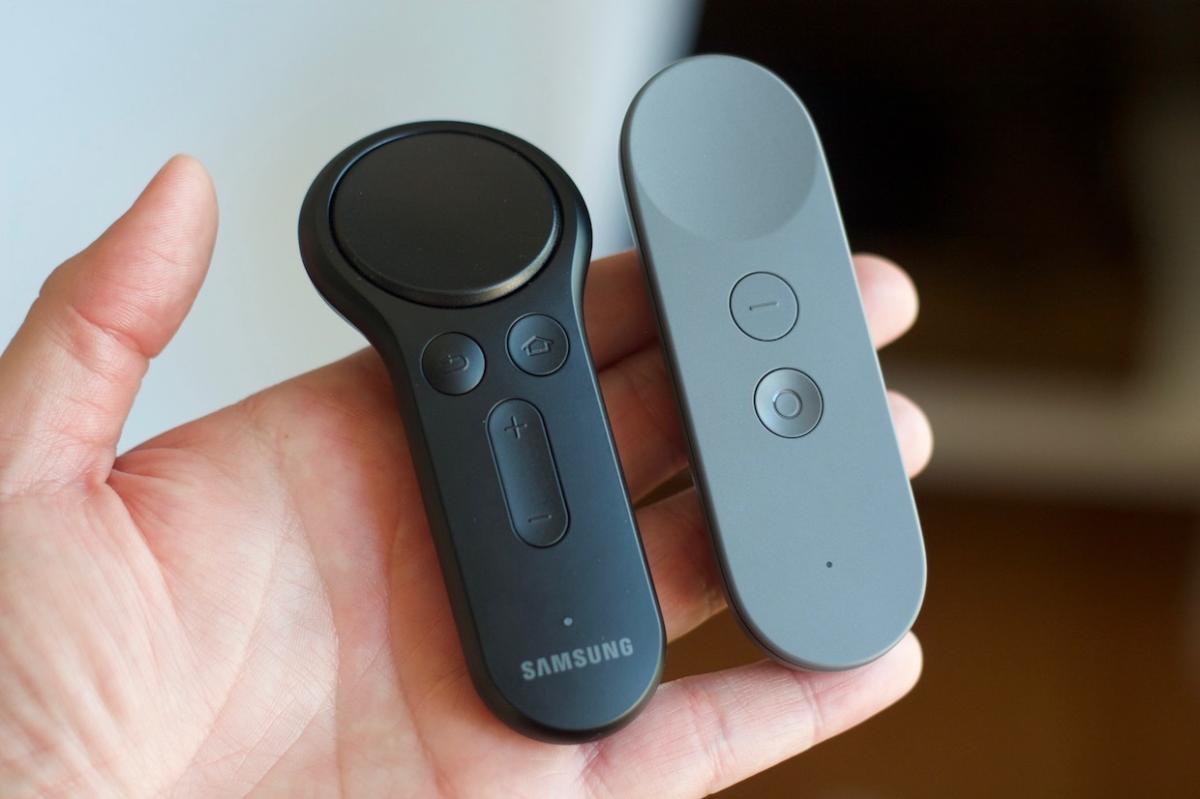

Samsung is just joining the party, bundling its new Gear VR Controller with the new Galaxy S8 with a compatible headset. And selling it separately for use with the last couple of consumer headset models. You’ve been able to use traditional gamepads with the Gear VR before, and you still can. But they’re sparsely supported; Minecraft is the most significant example of a game that requires a full gamepad, but nothing else is nearly as notable.
The Gear VR Controller, meanwhile, is clearly built in the mold of the Daydream remote. It’s another one-handed wireless effort with a big touchpad button, home, back, volume control buttons, and built-in motion controls. Samsung has one significant advantage here; a nice, fat trigger button on the bottom. This allows another input option for all games and specifically empowers shooting games, like Drop Dead.
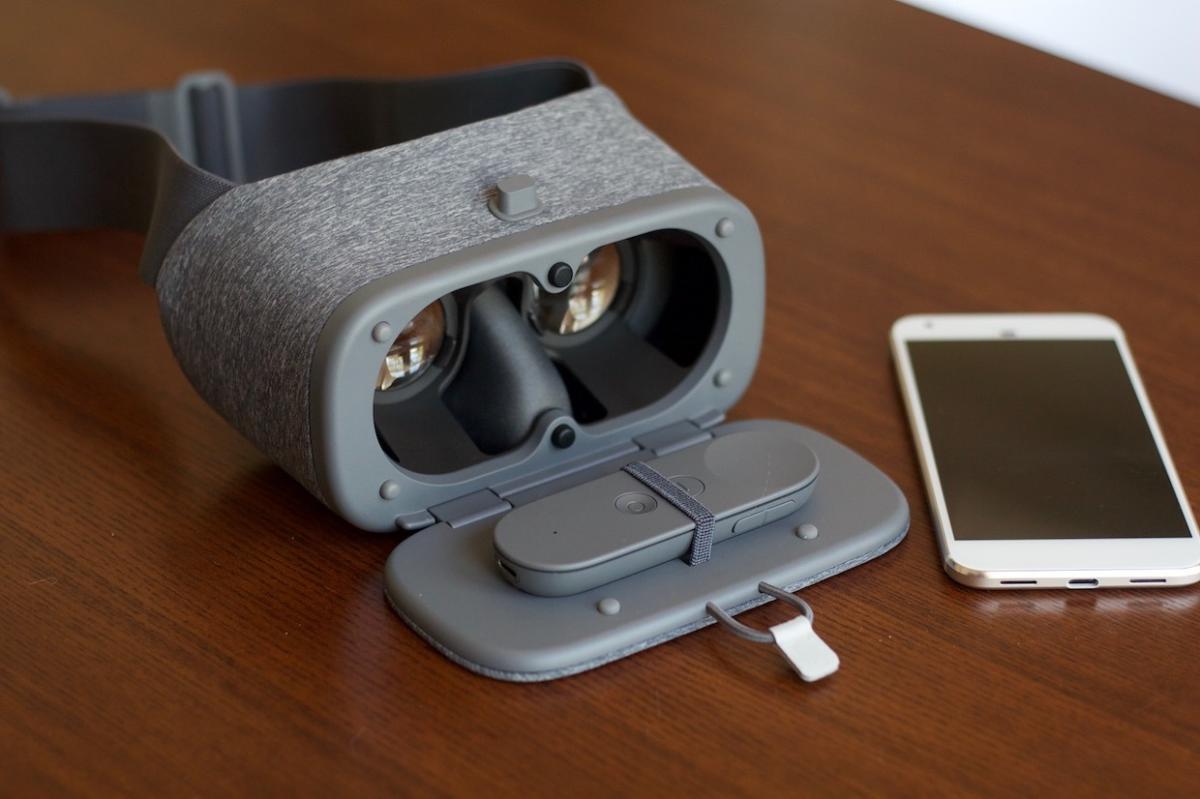

That’s a benefit, but the Gear VR doesn’t require the Controller. The vast majority of existing experiences don’t use it meaningfully. We’ll surely see more apps and games implement Controller functionality soon, now that it’s standard for the platform. Still, Daydream has had that going on since the start. There’s no input fragmentation for Daydream between the haves and have-nots.
Both controllers occasionally need to be re-centered, as their positioning tends to drift within the VR world. However, that’s as simple as holding the home button in both cases. However, I also had some issues with the Daydream View’s Controller, where I noticed very janky or laggy inputs. I haven’t been able to replicate the problem. But it has popped up a couple of times; it really hobbled play in those instances.
Comfort and Big Differences
Comfort is one of the biggest differentiators between headsets, primarily because of how they approach straps. The Daydream View is the more comfortable option due to its soft-touch fabric exterior. Still, I’ve found the opposite to be true.
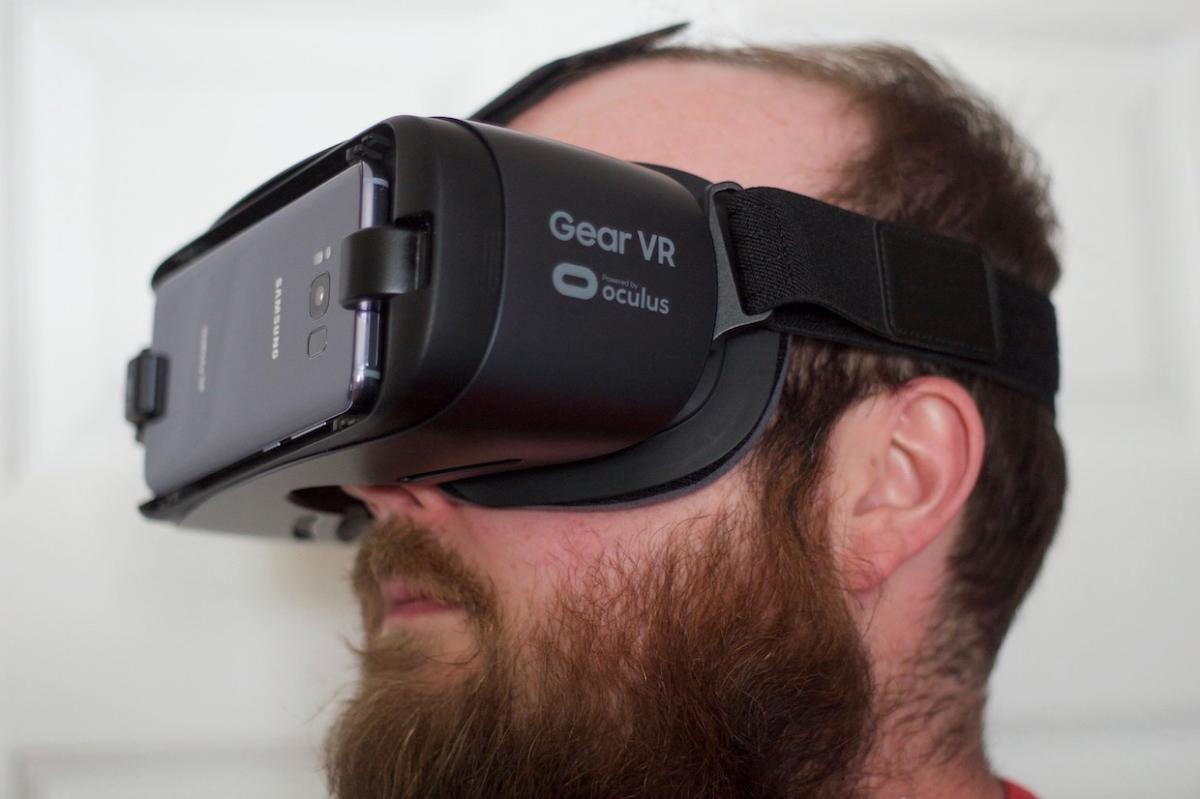

See, the Gear VR has one big strap around the back. And an optional, smaller second strap that goes over your head. The straps loop through plastic holes on the headset and then connect back to themselves each other with Velcro. Not only does that provide a snug yet fully adjustable fit. But it also ensures that your setting stays intact even once it’s off your head.
And on the face, I find it entirely comfortable. There’s a soft, cushioned lining around the faceplate. Where it makes contact with your skin. The material behind it is thin, flexible plastic, meaning it shouldn’t hurt your face unless the straps are too tight. With the extra top strap, it’s possible to secure the Gear VR to ensure it won’t droop down during use.
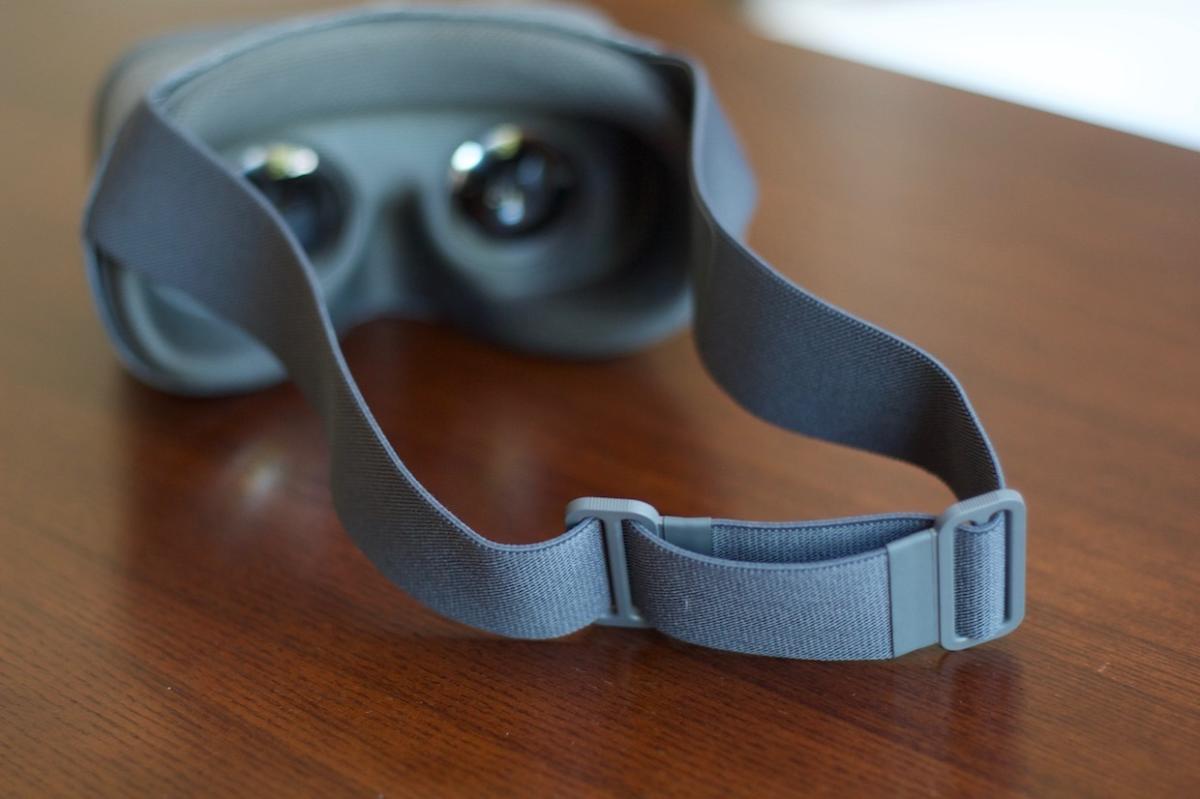

Daydream View’s strap, by comparison, isn’t as reliable. It’s permanently stitched to the headset; you get one strap around the back of your head. Which can be adjusted by tugging it left or right through the buckles. However, it’s easy to lose your setting once you take off the headset. The lack of a top strap made it difficult for me to find a comfortable and secure location. Typically, I have to secure it so tightly that it presses awkwardly against my face. But that’s better than having it sag during use.
Gear VR has another advantage; it comes with a focus dial-up at the top. Thanks to the little dial, I can take off my glasses. I’m nearsighted and use the headset clearly without them. However, the current Gear VR model has ample space to fit glasses. The Daydream View has a fixed focus and less room for glasses; it’s usable but not nearly as comfortable.


On the other hand, our original Daydream View reviewer found the headset more comfortable than the first consumer Gear VR headset. So your experience may vary. For my face, however, which probably is wider. The Gear VR fits better and stays that way; it doesn’t require me to jam my glasses in every time.
One last note here; both devices let in a bit of light around the nose. But I’ve seen more of it with the Daydream View, thanks to its wider opening. A bit of light comes through on Daydream View’s left and right edges. It’s most noticeable when viewing darker content or when the screen is blank. Still, the resulting glare can disrupt the viewing experience, especially since I have to wear glasses within. It’s worth minimizing natural light and turning off nearby lamps.
Compatibility, Only the best
If you want to use the consumer Gear VR, you’ll need a Samsung phone, not just any Samsung phone. It has to be a Galaxy flagship from the last couple of years, which means any Galaxy S6, S7, or S8 model and the Galaxy Note 5. The Galaxy Note7 was also compatible until Samsung recalled all the devices the previous year.
All have high-resolution Quad HD AMOLED displays and top-tier processors to handle all the computing needed for VR. The newer the phone, the better. You’re less likely to run into a slowdown or overheating with the Galaxy S8 models, thanks to their added power.
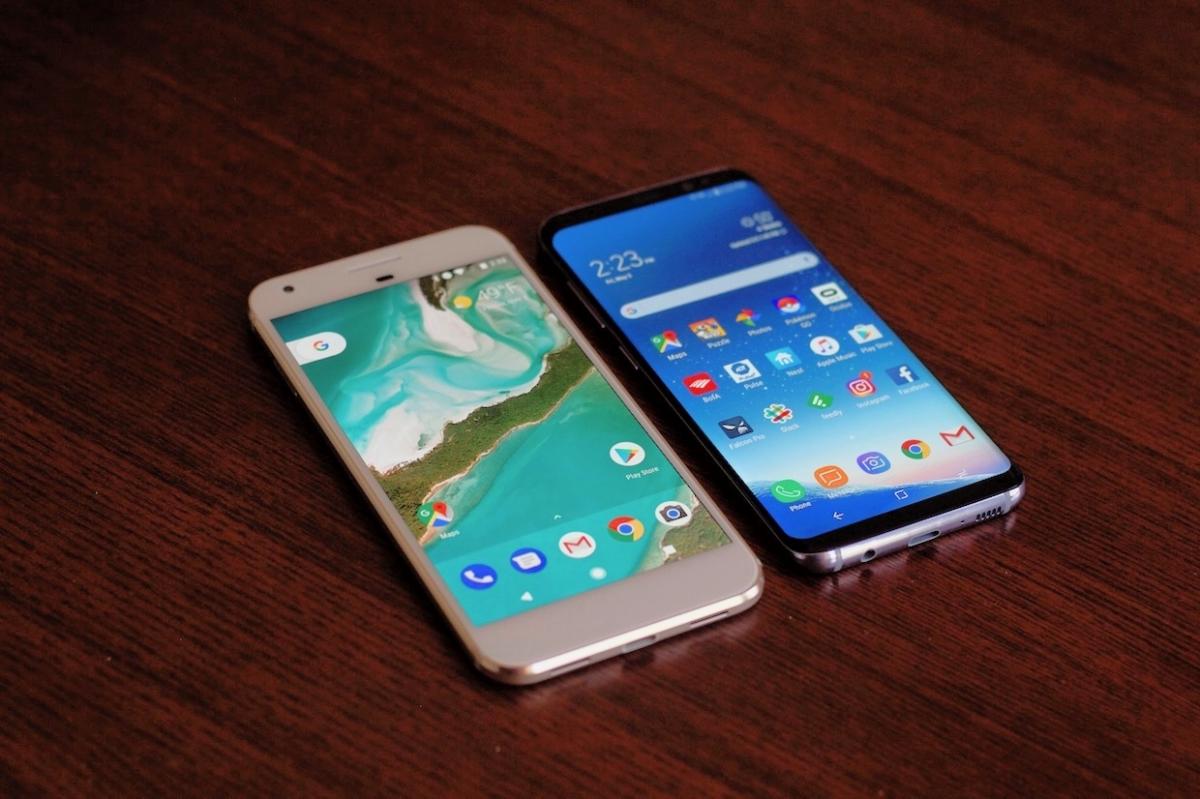

It’s a different story from Daydream. The Android Nougat-driven VR platform is designed to support an array of phones and, eventually, more headset models. The Pixel and the Pixel XL are Google’s flagship phones built for Daydream. Still, the View headset also works with the Lenovo Moto Z, Moto Z Force, the Huawei Mate 9, and the ZTE Axon 7.
Those phones likewise have super crisp Quad HD (2560×1440) screens. But the standard Pixel is the lone exception; with a 1080p display, it packs fewer pixels into its five inches. That results in less clarity once you strap the phone within an inch of your eyeballs. Which means the picture may be slightly messy. Each screen pixel is more prominent with a 1080p display, so they’re more noticeable in VR. It’s a definite compromise.
Other phones will be added to the Daydream roster in time; as mentioned, we should also see additional headset options. Right now, however, the Daydream View is your only option for the platform. And while Daydream supports phones from multiple makers, Samsung’s phones are among the most popular Android devices on the market. So in terms of overall user reach, Samsung has an edge.
Software More is More
Both Gear VR and Daydream have VR menu screens that let you quickly jump between apps, purchase content. And generally stay inside, so you don’t have to take the thing off. The Gear VR menu can be controlled either with the new Controller or your gaze with the headset’s touchpad. While Daydream uses the controller pointer.
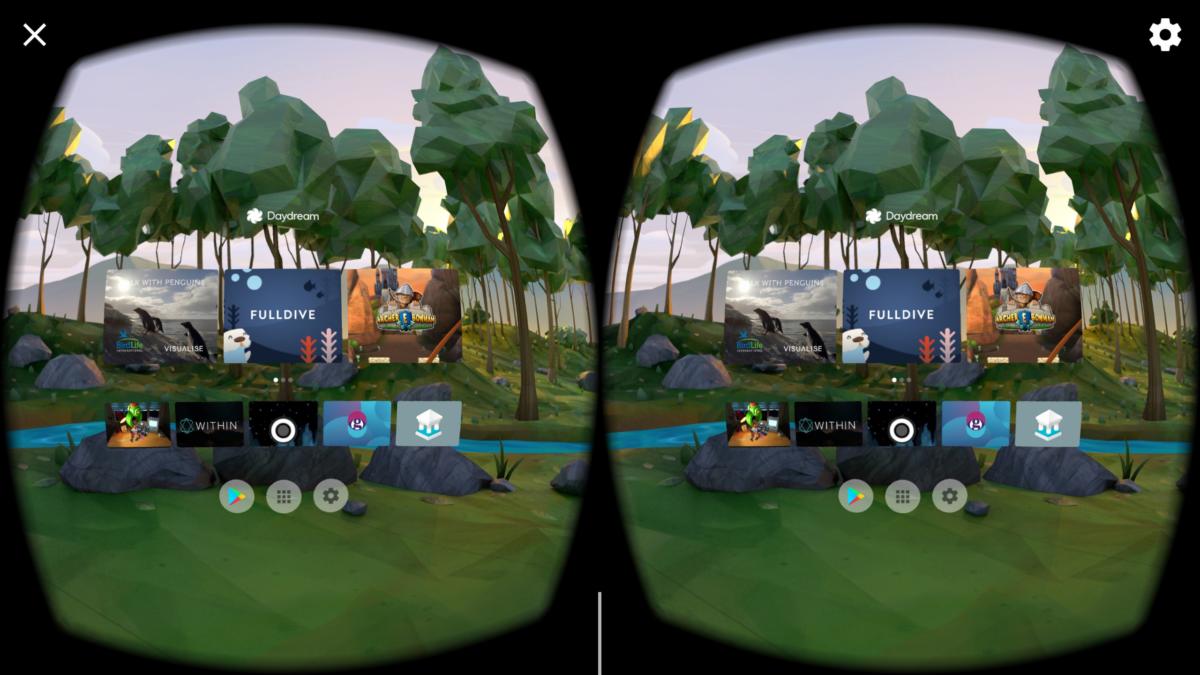

When it comes to games, apps, and experiences, on the other hand, Samsung’s two-year lead is strongly felt here. Gear VR has many apps, including high-profile releases, while Daydream’s selection is notably sparser. Samsung benefits in part from its association with Oculus, which makes its own based Rift headset. But also handles the software platform for the Gear VR.
The Gear VR has ports of great games like Minecraft, Hitman Go, and Smash Hit, for example. Along with fun originals like Land’s End, Skylight, Darknet, Omega Agent, and Drop Dead. And those are just examples from a pretty sizable overall stack. Daydream has its own enticing original games, including picks like EarthShape from notable indie studios, as well as Lego BrickHeadz Builder VR frantic shooter Hunters Gate.
There are some similarities between their lineups, although not too many. Both have the delightful party game Keep Talking Nobody Explodes, for example. Each has its own space shooter, and Daydreams is Gunjack 2. Still, they’re about the same, really. Gear VR has many more games and enthralling ones that you’ll actually want to spend a lot of time with.
When it comes to media apps, you’ll find a lot of the usual suspects on both platforms. Like Netflix and Hulu have VR versions that let you stream to your headset, for example. While Thin is a leading VR video service with music videos, short films, and documentary shorts. On both, you’ll also find the very nifty Star Chart, with constellation maps and up-close views of planets. Each service has an array of other apps not found on the rival platform. Such as the underwater Ocean Rift for Gear VR and the Fantastic Beasts movie experience on Daydream.
Daydream also has the advantage of Google’s own services. Such as a native YouTube app that quickly points you toward the latest VR videos, as well as Photos. Letting you tap into photospheres of various locales. You can watch YouTube videos on the Gear VR in the web browser, but Daydream’s app could be more intuitive. Meanwhile, Daydream still needs an in-headset web browser, which is a curious oversight.
All told, where there’s some critical overlap between services, Gear VR and Daydream have many differences in content offerings. Overall, Samsung has a lot more stuff in the mix and the flexibility of using the web browser. At the same time, the Daydream platform still feels like it’s just getting started. There’s some good stuff, but only a little so far.
Performance Mostly close
The Gear VR and Daydream are comparable in VR performance; in both cases, that’s an excellent thing. Low latency means that your movements are quickly represented in the games and apps. With no noticeable delay, increasing immersion and reducing motion sickness. Most of the games and apps on both platforms look tremendous. Definitely, they run smoothly, in my experience, with rare exceptions. It’s a dramatic leap in quality from Cardboard if that’s all you’ve ever tried in the past.
Graphically, both headsets can do quite a bit with flagship Android phones. With crisp characters and backdrops, not to mention smooth frame rates. And with a large Quad HD screen in front of your face. The clarity is pretty impressive, you’ll still be able to make out pixels, but it’s rarely a distraction. As mentioned before, however, that’s not nearly as true with the lower resolution 1080p screen of the standard Pixel phone.


Can your choice of phone change the level of performance you get from each headset? Yes, to some extent. That shouldn’t be a problem with Daydream, as every certified phone has top-of-the-line tech.
However, Gear VR compatibility spans three generations of chips. While still powerful, the Galaxy S6 line doesn’t have as much muscle as the Galaxy S8. In my own usage, older phones are more prone to overheating or occasional slowdown. You may have to take a break after playing a high-performance game for a long stretch. However, I have yet to encounter that with the Galaxy S8. While the Pixel XL I’m using with the Daydream View runs super hot after being in the shell. It hasn’t impacted play.
The Daydream View does come up short in one regard, however; it has a slightly more limited field of view. Daydream View offers approximately 90 degrees FOV, while the Gear VR bumps up to more expansive, more luxurious 101 degrees. Both make it seem like you’re viewing the world through an old scuba mask. But it’s less noticeable on the Gear VR.
It’s not initially apparent, but you may run against the limitation in 360-degree games or videos, for example. It can make the Daydream View feel more claustrophobic by comparison. I’m using the Pixel XL with the Daydream View. The borders are also said to be more noticeable on the smaller Pixel screen.
Verdict
For both the Gear VR and Daydream View. My advice is this, if you have a compatible phone. Don’t hesitate to buy the headset to go along with it. High-end mobile VR is a treat, even if it’s not on an HTC Vive or Oculus Rift level. You can have a lot of fun without spending much extra money. That’s true with both of these platforms.


On the other hand, if VR is a crucial factor in which Android phone you’ll bring home next. The Gear VR makes a more convincing case right now. It has a deeper, more exciting catalog of VR games and a slightly more capable headset and Controller. I view the more comfortable experience of the two. It would be best if you considered the cost. However, the new Gear VR with Controller is up to $129. While the Daydream View sells at just $79 with its own Controller.
Daydream has a ton of potential as the more open platform of the two. That may turn the tide, especially as more phones support additional Daydream headsets options. Samsung is pushing mobile VR to new, exciting places. Still, with the bundled Controller, the Gear VR has reasserted itself as the top option today. Now it’s Google’s turn to try to build upon Daydream’s debut effort with something even better.
















